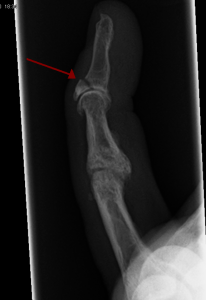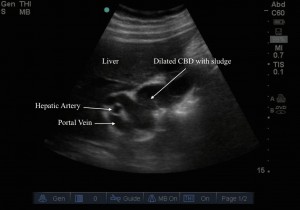Mallet Finger Mechanism: Forceful flexion of distal phalanx results in disruption of extensor apparatus. Patients often present with a flexor deformity. Pathophysiology: This is classified as a type of zone 1 injury involving the DIP joint. 4 Types: Type 1: closed without fracture Type 2: Open tendon laceration without fracture Type 3: Open tendon injury …
Category: Clinical Question Archive
Jun 09
Know your RSI!
[notice textalign=”center”]AIRWAY[/notice] As some of the more junior residents realize this time of year… fumbling your way through an intubation looks bad all around. Help yourself by really becoming comfortable with induction and paralytic agents. A difficult airway is, after all, owned by the ED. I wouldn’t want anyone else, even Anesthesia, intubating when there …
Jun 07
Can I use the age adjusted D-dimer in clinical practice? If so, how?
The ADJUST PE trial is hot off the JAMA presses in March 2014. The takehome: of 1141 patients excluded from scanning by clinical assessment plus age adjusted d-dimer, there were only 2 cases of non-fatal PE (0.2%). Of these 1141 patients, 331 had an age adjusted d-dimer greater than the standard cutoff of 500mg/mL. Of these …
Jun 07
CHF or PE? PE is a known and common complication of CHF
challenging case: an obese 60yo patient never seen by a doctor as an adult presents marked peripheral edema, hypertension, and 2 months of worsening DOE, PND, orthopnea. BNP 400, EKG Unremarkable, trop 0.1, stating well. It feels like CHF. But the cardiologist wants a CTPE. We oblige – big saddle embolus with RV strain. This …
Jun 06
Anaphylaxis
Anaphylaxis: 5 Clinically Relevant Questions: 1) Whats the difference between anaphylaxis and anaphylactoid? Anaphylaxis: IgE mediated Anaphylactoid: Direct degranulation of mast cells 2) What are the main causes? Main classes: Food, insects, medications. –PCN Cross Reactivity with Cephalosporin? True incidence <0.1% true anaphylactic cross reactivity –Radiocontrast material(RCM): Shellfish and iodine allergies are not relevant! That being …
Jun 06
How to give thrombolytics
[notice]PHARMACOLOGY[/notice] A great question came up in the zones. We see and likely should be comfortable with the dosing of Alteplase for CVA. Grady is a renowned Stroke Center and I would certainly have any of my family members come to the Marcus Stroke and Neuroscience Center if they were having a stroke. The fact …
Jun 05
How not to get sued…and just good patient care!
Without slowing you down… Sean’s TOP 5 Every patient: 1) Vital Signs: Never ignore them, and never discharge an abnormal one (without a good reason!) 2) Nursing Notes: Read them, and explain any contradictions 3) Reexamination: Document a reexamination on every patient in plain language 4) Shared Decision Making: “Mr. Jones and I discussed the …
Jun 05
How do you assess suicidal ideation?
No Blue Zone shift is complete without seeing at least a handful of “Psych Eval” patients in the newly minted Blue Obs. Until the department of Psychiatry starts up an intake process again at Grady we are left with the burden of screening these patients and making a decision as to whether the patient we …
Jun 04
Finger Thoracostomies
From teaching round–Courtesy of Mene Demestihas: In a patient in cardiopulmonary arrest, going through the H’s and T’s can lead us to suspect a tamponade or compressive physiology as the culprit of the arrest. In these patients placing a formal chest tube is generally frowned upon as it can be a labor-intensive process for a …
Jun 02
Teaching Ultrasound: Cholangitis-Choledocolithiasis
The IOW this week comes from Drs. Dustin Hill and Katie Dean. Their patient is 40’s year old male, who presented to the ER with fever, tachycardia, and RUQ abdominal pain. He had a history of cholecysttitis previously and had undergone cholecystectomy. Bedside ultrasound below was obtained. It can be challenging to get oriented when imaging …


